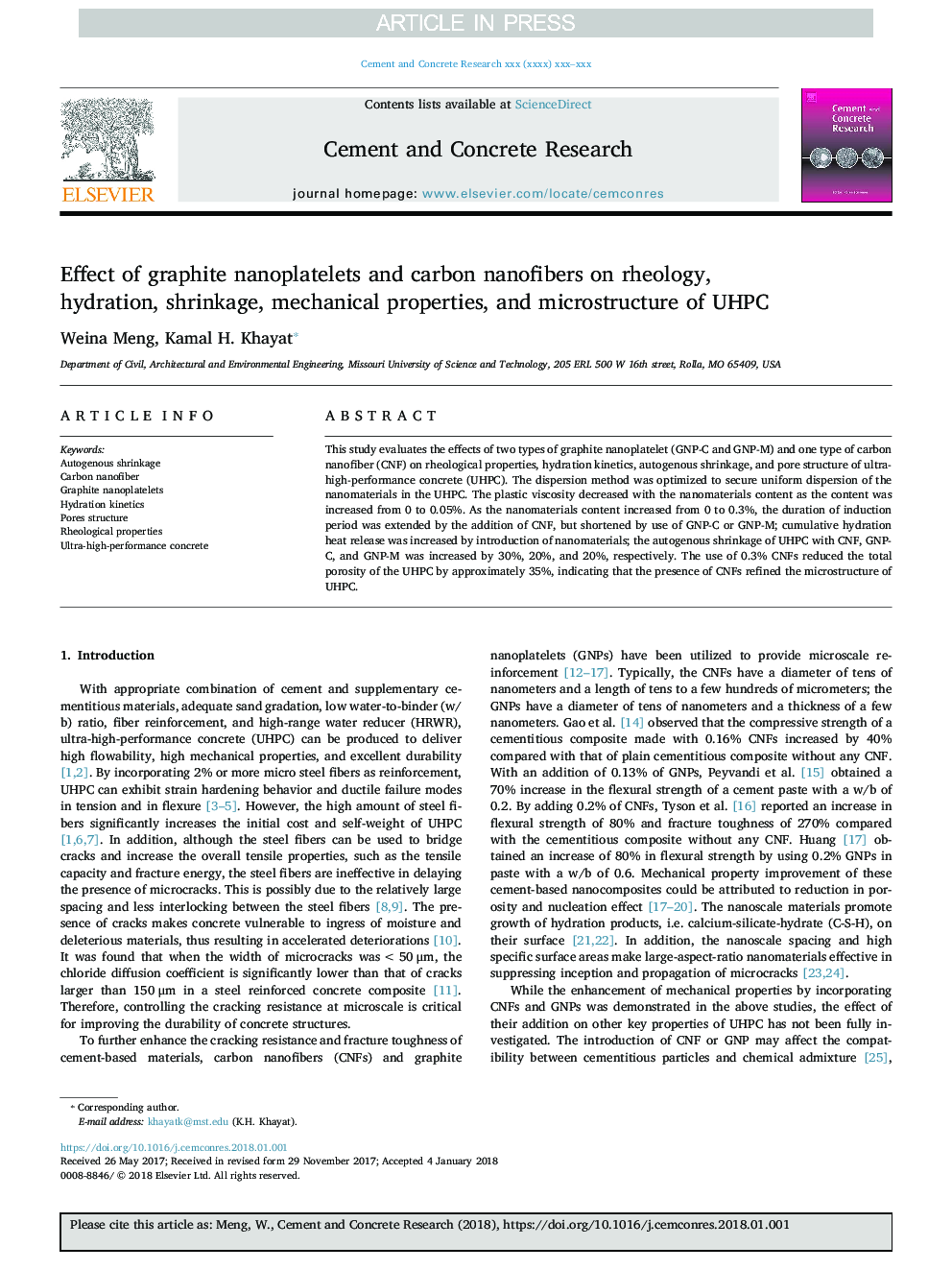| Article ID | Journal | Published Year | Pages | File Type |
|---|---|---|---|---|
| 7884831 | Cement and Concrete Research | 2018 | 8 Pages |
Abstract
This study evaluates the effects of two types of graphite nanoplatelet (GNP-C and GNP-M) and one type of carbon nanofiber (CNF) on rheological properties, hydration kinetics, autogenous shrinkage, and pore structure of ultra-high-performance concrete (UHPC). The dispersion method was optimized to secure uniform dispersion of the nanomaterials in the UHPC. The plastic viscosity decreased with the nanomaterials content as the content was increased from 0 to 0.05%. As the nanomaterials content increased from 0 to 0.3%, the duration of induction period was extended by the addition of CNF, but shortened by use of GNP-C or GNP-M; cumulative hydration heat release was increased by introduction of nanomaterials; the autogenous shrinkage of UHPC with CNF, GNP-C, and GNP-M was increased by 30%, 20%, and 20%, respectively. The use of 0.3% CNFs reduced the total porosity of the UHPC by approximately 35%, indicating that the presence of CNFs refined the microstructure of UHPC.
Keywords
Related Topics
Physical Sciences and Engineering
Engineering
Industrial and Manufacturing Engineering
Authors
Weina Meng, Kamal H. Khayat,
